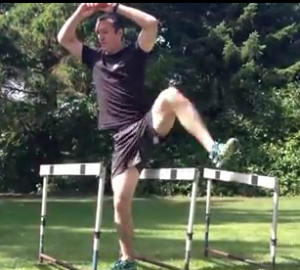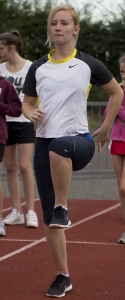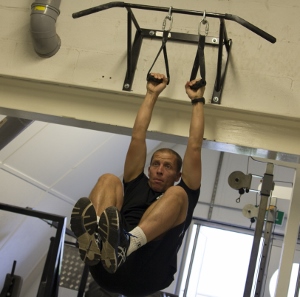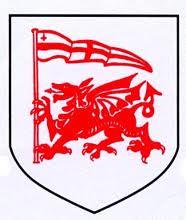Main Menu
Latest Blog Entry
User login
3 Tips for Athletes’ Winter Training
“A lifetime of training for just 10 seconds”
Jesse Owens
Winter for track and field athletes is the ideal time to work on conditioning without the focus of peaking for competition. Here Assistant Coach (and erstwhile sprinter) Matt Durber highlights 3 ways you can improve your athlete winter training.
Improve your off season training

Winter is a chance to get off the track!
There is more to out of season training than running endless laps of the track or competing in cross country races.
The following observations are based on my experience over the last few years of athletics training, as well as some insights from top track coaches.
1) Warming up: the clue’s in the name

Matt using hurdles to develop mobility
Recently on a cold winter evening, I saw an athlete arrive at the track and proceed to jog a couple of laps.
Upon finishing and becoming “too warm”, the athlete removed their tracksuit and performed some static stretches sat down on the floor.
Needless to say after a few minutes the athlete was now “too cold” and had to go and warm up again (making the previous 10 minutes completely pointless?!)
Instead, why not prepare for training the smart way. A run to warm up initially is not a bad thing (after all, that is what you will be doing during the session!), but should be followed by a series of dynamic exercises working on mobility and technique, rather than static stretches.
More tips on warming up.
2) The need for Speed
 Winter is traditionally used as a time to work on endurance, even for sprinters. However, without working on top speed, what are you learning to endure?
Winter is traditionally used as a time to work on endurance, even for sprinters. However, without working on top speed, what are you learning to endure?
Speed work should be included in the training plan all year round, and should consist of exercises to help improve top speed through correct running mechanics. The volume of this work can then be increased (when suitable) to provide the endurance of the newly gained speed.
Speed training is not only important for Sprinters, but can also help middle and long distance runners as well. Increasing your top speed will result in improved efficiency when running at a slower pace.
Read more thoughts on speed training from Frans Bosch: author of “Running- Biomechanics and Exercise Physiology Applied in Practice”
3) Strength training
Many athletes use the winter months as a time to train in the gym to increase strength and power.
Although exercises such as Squats and Deadlifts will provide a significant stimulus for muscular adaptation, it is just as important to focus on the application of strength.
Circuits are a great way of organising a group and getting general work done in a short time and I use them accordingly (circuit video and here). However, doing one good repetition, followed by 14 bad ones is helpful to neither body or soul!
Rather than just performing generic exercises to strengthen legs or “core”, it is also important to focus on the requirements of your event.
- Runners-e.g. Hip heist, knee stability and ankle stiffness
- Jumpers-e.g. Horizontal or vertical displacement off single leg
- Throwers– e.g. Shoulder strength and mobility as well as rotational strength from torso and hips.
 This hanging hip drill is an example of specific strength.
This hanging hip drill is an example of specific strength.
A good rule of thumb is to work on general strength for 50% of the time, specific strength the other 50%.
This review of Track coach Gary Winkler’s seminar on speed training describes the importance of making every aspect of training relevant to your sport or event.
Read here for more information on the role of the hamstrings during running.
Summary
- Make every aspect of your training, from warm ups to gym work, relevant to you and your event.
- Aim for precision and quality in every repetition in the gym or lap of the track that you complete.
- Based on my personal experience over the last year as well as the wealth of experience of other coaches I have learned from, the athletes who make the most progress are the ones that do things consistently well.
Matt Durber
If you want comprehensive training plans with video clips, then check out our ebooks on Amazon: Jump Higher, Run Faster and Get Stronger.
Any young sports people in Devon who want to improve their performance, either come to our weekly sessions in Willand or one of our holiday Sports Performance Workshops
Client Testimonials
 London Welsh RFC
London Welsh RFC
James has provided a wealth of experience and expertise to the Academy set up at London Welsh RFC in recent years. He has addressed both the physical and mental development of the players through innovative, player and position specific programmes which have resulted in each individual within the group developing towards their potential.
More


Comments
[…] 3 winter training tips for athletics […]